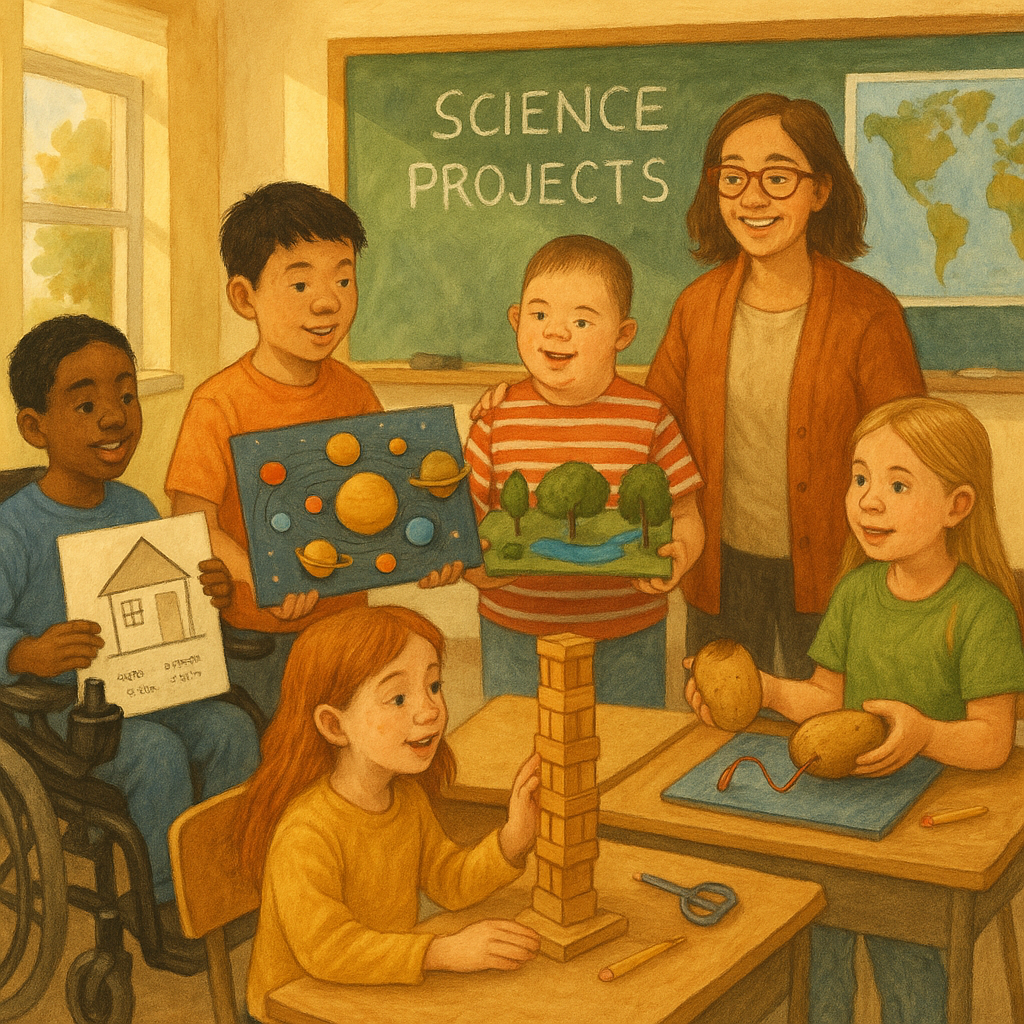
Introduction
Using authentic assessments in special education offers a more accurate, empowering way to measure what students know and can do. Unlike standardized tests that often fail to reflect the abilities of students with disabilities, authentic assessments align with individual learning goals and real-world skills.
This guide explores the benefits and practical steps for using authentic assessments in special education to enhance student outcomes and IEP alignment.
What Are Authentic Assessments?
Authentic assessments evaluate students through meaningful tasks reflecting real-world applications, such as:
1. Projects and presentations.
2. Portfolios showcasing work over time.
3. Practical demonstrations of skills.
4. Performance-based tasks.
These assessments are tailored to each student’s learning goals, aligning seamlessly with using authentic assessments in special education for more meaningful evaluations.
Learn more: Edutopia: What is Authentic Assessment?
Why Using Authentic Assessments in Special Education Matters
Using authentic assessments in special education:
1. Provides a clearer picture of a student’s capabilities beyond test scores.
2. Allows students to demonstrate skills in a supportive environment.
4. Aligns with IEP goals, measuring progress accurately.
4. Reduces anxiety and test-related stress for students with disabilities.
These benefits help educators design instruction that truly meets the needs of each student.
How to Implement Authentic Assessments in Special Education
Align with IEP Goals
Ensure tasks directly support the student’s individual goals, such as communication, functional academics, or vocational skills.
Use Real-World Contexts
Design assessments that mirror daily life tasks, like making a purchase or giving a presentation on a personal interest.
Collect Ongoing Evidence
Maintain portfolios to track growth over time, showcasing progress with photos, videos, and student reflections.
Provide Support and Scaffolding
Offer clear instructions, visual aids, and prompts to help students succeed during assessments.
Involve Students in the Process
Encourage students to select work samples and reflect on their learning, building self-advocacy and confidence.
Challenges and Solutions
While using authentic assessments in special education requires effort, you can overcome challenges by:
1. Starting small with one or two tasks aligned with current units.
2. Collaborating with other educators for planning ideas.
3. Involving parents to extend authentic tasks at home.
Related Learning
Explore these posts for a broader understanding of special education and equity:
1. Understanding IEPs for Parents of Special Needs Children.
2. Transition Planning for Special Education Students.
How Policy Impacts Assessment Practices
Standardized testing policies can conflict with the principles of using authentic assessments in special education, emphasizing scores over meaningful progress. Addressing these systemic barriers requires advocating for assessment flexibility within IEPs.
Learn more about policy impacts in: https://www.amazon.com/Politics-Education-K-12-Lonnie-Palmer/dp/B0DBGCGGNJ
Frequently Asked Questions (FAQ)
Q: What are authentic assessments in special education?
A: Authentic assessments evaluate student learning through real-world tasks that reflect what students need to do outside the classroom, such as portfolios, project-based tasks, and performance activities.
Q: Why are authentic assessments important for students with special needs?
A: They provide more meaningful and accessible ways for students to demonstrate knowledge and skills, accommodate various learning styles, and support individualized education goals.
Q: How can teachers design authentic assessments for special education students?
A: By aligning tasks with IEP goals, using flexible formats (oral presentations, hands-on tasks), and offering multiple ways to demonstrate learning to fit different strengths.
Q: How do authentic assessments differ from standardized tests?
A: Unlike decontextualized standardized tests, authentic assessments are customized, meaningful, and embedded in real-life tasks—giving students more agency and relevance.
Q: Can authentic assessments be aligned with academic standards?
A: Yes. instructors can map real-world tasks to academic standards and IEP goals, ensuring that meaningful learning also supports curriculum requirements.